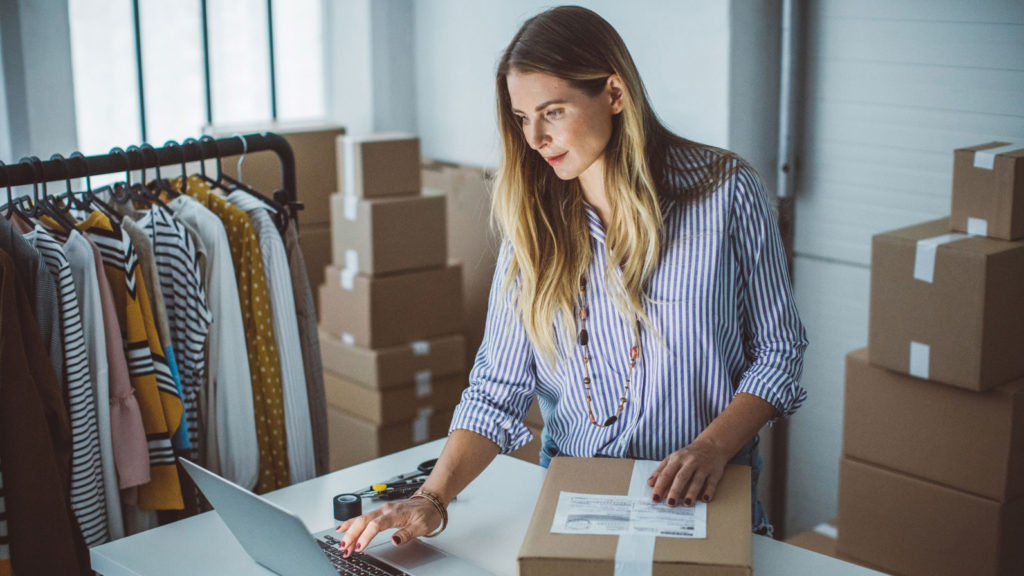Interview with Thomas Baldry, senior vice president of international mail and international relations, Deutsche Post
This feature is part of a series of interviews with executives from posts around the world looking at how the global Covid-19 pandemic affected operations. Read the June issue of Parcel and Postal Technology International magazine and follow www.parcelandpostaltechnologyinternational.com to find out how other posts performed during these unprecedented times.
How is the pandemic affecting the postal service?
While parcel volumes in the Post & Parcel Germany division increased significantly at the end of the quarter, letter mail and especially advertising mail registered pronounced declines. While the DHL divisions felt the effects of the standstill in many regions and customer industries, business in China experienced a recovery in March, after having had to cope with a substantial drop in February. Globally, Deutsche Post DHL Group (DPDHL) saw a strong increase especially in the food and healthcare sectors. Furthermore and thanks to its own fleet of cargo aircraft, DPDHL proved to be one of the few providers in the world still able to transport urgent deliveries.
How have parcel delivery and letter delivery numbers increased/decreased?
Parcel volumes increased from 5.2 million on average per working day in ‘normal’ times to nine million on several peak days. Letter mail volumes went down. In particular, volumes in the area of dialog marketing and advertising mail decreased significantly during Covid-19 times.
How does this period of 2020 compare with 2019?
DPDHL maintained its profitable growth trajectory in the first quarter of 2020 despite the noticeable impact of the Covid-19 pandemic. Revenue improved by 0.9% to €15.5bn (US$17.4bn), and operating profit (EBIT) came in at €592m (US$665m).
Adjusted for a pandemic-related negative earnings impact of €210m (US$235m) as well as negative effects of €234m (US$263m) incurred in the first quarter to realign the Group’s StreetScooter activities, operating profit stood at approximately €1bn (US$1.12bn). This result came in around €200m (US$225m) over the prior-year figure adjusted for non-recurring items.
Did you launch any new services to meet demand?
With our new initiative ‘DHL lokal handeln’ (DHL shop locally) we encourage shopkeepers and retailers, who did not generate revenues due to the closure of their shops during Covid-19, to increase their engagement in the area of e-commerce and to register as a business customer at DHL Parcel to benefit from the company’s expertise and offerings. Special conditions of well-known online platforms like eBay and Zalando are also part of the initiative, as well as Deutsche Post’s dialog marketing portfolio for local advertising.
Did you need to hire new staff due to increased demand for delivery?
Yes, we hired additional 4,000 temporary workers in order to cope with the high increase in parcel shipments. We need to see the long-term effects the Covid-19 crisis will have on online shopping behavior and demand. These effects will determine the level of network capacity needed. In addition to the hiring of 4,000 temporary workers we offered short-time employees from other industries to work for DHL Parcel, which was another successful recruitment measure.
How were employees kept safe during the epidemic?
The safety of our employees, partners and customers is our top priority. For this reason, we took all necessary safety precautions in all areas in accordance with the recommendations of the Robert Koch Institute (the Federal authority responsible for pandemics). In order to minimize mutual contact, for example, we divided our delivery staff and the employees in our facilities into two different shifts.
In addition, we dispensed with the recipient’s personal signature until further notice, so that the postman accepts it for the customer without contact. We have also made hand disinfectants and water canisters available to our delivery staff so that colleagues can wash their hands even during the delivery tour.
Furthermore, employees at our sites/facilities use masks wherever and whenever compliance with the recommended minimum distance of 1.5-2m cannot be consistently maintained (e.g. technicians, transportation supervisors, etc.). We are providing employees with masks wherever state or local governments have instituted mask requirements. In addition, we communicate weekly how we are improving safety measures and remind our employees to follow the measures and to use the safety equipment.
How have you invested in new technologies?
Despite the increased efforts of the whole organization to master the massive surge in parcel volumes we continued to pursuing our strategic objectives. For instance, one objective is related to the digitization of our services. In parallel to crisis management we have launched new versions of our online services and expanded our electronic touchpoints, and continued the roll-out of a new generation of handhelds in delivery.
How has the post supported local communities?
In close cooperation with the government of the federal state of Northrhine-Westfalia we conducted a grocery delivery pilot project with food retailers REWE and EDEKA in Heinsberg, which was a hotspot at the coronavirus outbreak in Germany. Furthermore, we supported the government of the federal state of Bavaria in executing the federal elections by postal vote only. Apart from that, our DHL Express division supported 340 German hospital pharmacies nationwide and free of charge by delivering 14 tons of glycerin and 35,000 liters of hydrogen peroxide for the production of disinfectants.
How has the pandemic affected your cross-border delivery services?
Overall, in our opinion, Deutsche Post DHL Group has made the most extensive number of destinations possible for its customers compared with other postal companies and continues to do so. However, during the coronavirus pandemic we had to face situations where our delivery partner in a foreign country could not deliver mail or parcel shipments to the recipients for several reasons. In some cases this led to the situation that these shipments were delivered with delays or that we even could not accept postal or parcel shipments for certain destinations. We are now seeing a recovery in international mail and parcel shipments to major destinations.
What was the biggest challenge faced during the pandemic?
Looking at cross-border we constantly had to adapt to changes, for example in transportation procedures (e.g. border controls), in international transportation capacities (e.g. cancellation of previously used flight connections) or in delivery procedures in the destination country (e.g. quarantine or other protective measures). Thanks to our broad geographic set-up and comprehensive portfolio of logistics solutions we were able to navigate with greater resilience than most other companies in this crisis situation.



